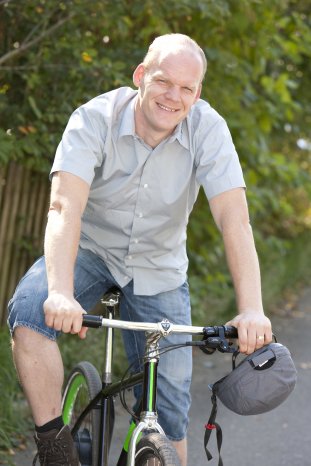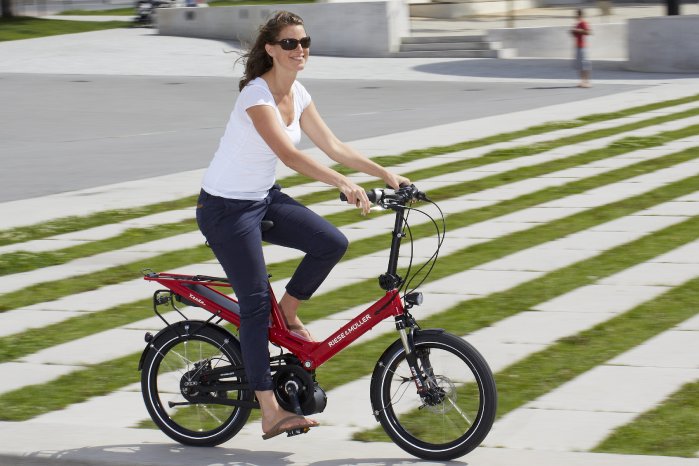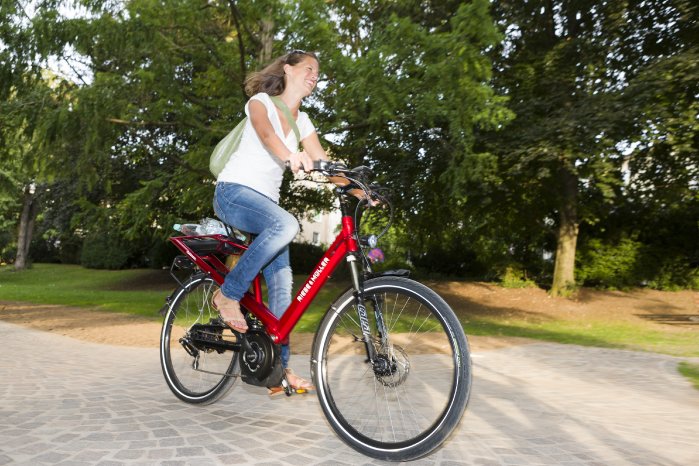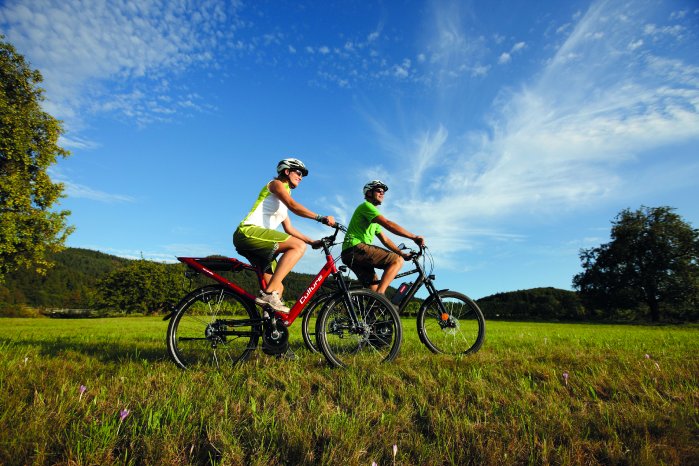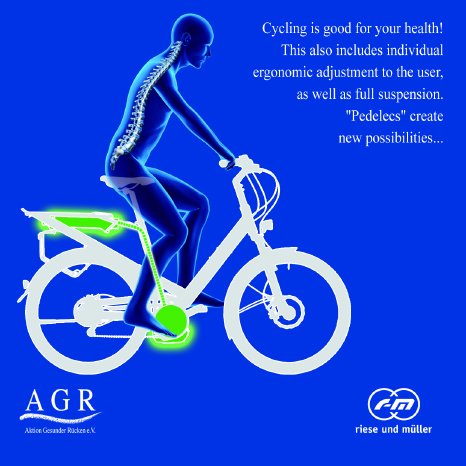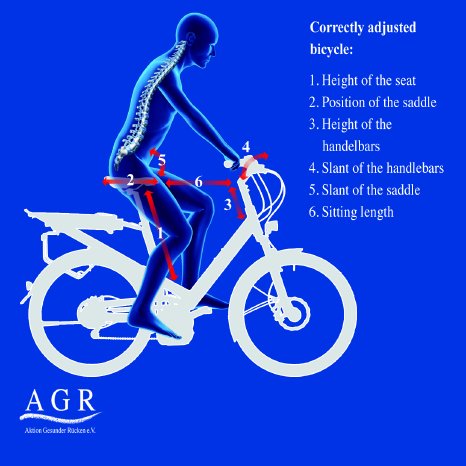It's a question of the right adjustment.
Healthy, back-friendly cycling is only possible if bike and cyclist are well suited to each other. In other words, it should be possible to adjust the bike individually at various points. It must be possible to adjust the seat height and length, saddle position and tilt, handlebar height and tilt to permit an ergonomic sitting position. The sitting height is adjusted correctly when the legs are never quite fully stretched while pedalling. The saddle should be positioned so that the cyclist's knee cap is perpendicular to the pedal bearing when the pedals are horizontal. The handlebar adjustment is also important for your back as it dictates the angle that your spine forms to your pelvis. The height and tilt of the handlebar should let you sit as upright as possible while holding your hands comfortably (see diagram).
Full suspension protects the back
Together with a healthy sitting position, a bike's suspension is important for your health. The spinal column can be damaged by the jolts resulting from cobblestones or potholes. The ideal solution is full suspension where the rear of the bicycle is suspended instead of just the saddle post. Full suspension (at the front and back) also makes cycling safer, because the shock absorbers improve the bike's road handling and ground contact.
Unisex is trumps
Meanwhile many men are also brave enough - and rightly so - to use a unisex bike (without cross-bar). A low step-through has also proven its worth for men cyclists. The focus is on greater comfort and the smallest possible danger risk.
It's the frame that counts
The frame geometry should make it possible to sit leaning forwards slightly (at an angle of maximum 30 degrees) to correspond to a naturally upright position of the back. But in the end, it is the cyclist's own individual feel-good position that decides whether the sitting posture will let the cyclist sit in a permanently relaxed fashion on the bicycle. If it feels good without being cramped and complies with general safety aspects of bicycle structure, it will be correct.
Saddles need an individual approach
The most important thing is that the saddle is convincing in practical use, is recommended as being comfortable and does not leave any pressure marks. Different shapes and sizes of saddle are suitable for different personal preferences, anatomies and cycling postures.
Motor for a real boost
Electric bikes, the so-called Pedelecs, are setting new standards in terms of healthy cycling. A Pedelec works like a normal bike but has an electric motor to help you pedal. This makes cycling much easier and possible with less exertion which can be adjusted individually. Just a few years ago, e-bikes were thought to be just for the elder generation and for people with health problems. But meanwhile the whole image has changed with ever growing numbers of people realising how pleasant it can be to have a bit of help when pedalling on a bike. Cycling in a pleasant environment is much more enjoyable if you don't have to exert all your strength on the pedals. Advantages when cycling in town: sweaty clothing is a thing of the past; instead, e-bikes make sure you arrive in relaxed condition even after a longer distance.
The Campaign for Healthier Backs has developed the "certified and recommended" seal of approval to give consumers a serious decision-making aid when choosing ergonomic products. Only products that satisfy the strict criteria imposed by an independent committee of experts will receive the award. If you're planning to buy a new bike and are looking for back-friendly, individually adjustable and AGR certified bikes, you will find that Riese & Müller from Darmstadt (www.r-m.de) for example offer a wide choice.
More information about bikes, the AGR, the seal of approval and certified products can be found at www.agr-ev.de/en.
Ergonomic requirements for back-friendly bicycles
- Framework geometry encourages an upright sitting position
- Adjustable height and tilt of the handlebars
- Adjustable, effective suspension (at the front and back)
- Saddle height, tilt and longitudinal position can be adjusted
- Low step-through
- Low weight
Additional requirements for e-bikes
- Battery range at least 40 km
- Battery is easily removed
(= weight reduction)
